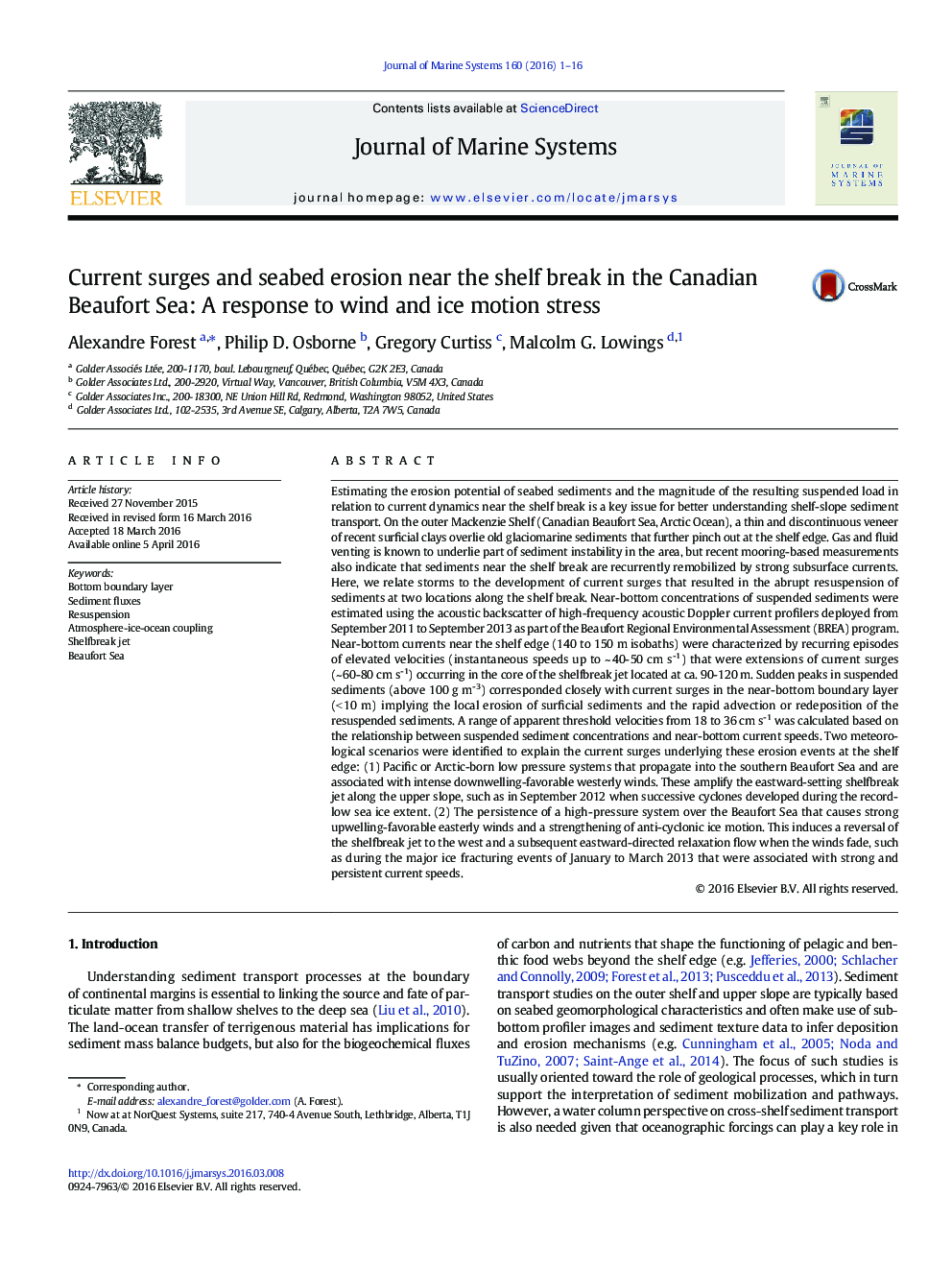| کد مقاله | کد نشریه | سال انتشار | مقاله انگلیسی | نسخه تمام متن |
|---|---|---|---|---|
| 4547853 | 1627270 | 2016 | 16 صفحه PDF | دانلود رایگان |
• Recurrent erosion of upper slope sediments by current surges at the shelf break
• Current surges driven by both wind and ice motion stress during storm events
• Near-bottom currents cycle 21-41 t m-2 yr-1 of sediments near the shelf break
• Downwelling events facilitate the transport of shelf break sediments to the slope
Estimating the erosion potential of seabed sediments and the magnitude of the resulting suspended load in relation to current dynamics near the shelf break is a key issue for better understanding shelf-slope sediment transport. On the outer Mackenzie Shelf (Canadian Beaufort Sea, Arctic Ocean), a thin and discontinuous veneer of recent surficial clays overlie old glaciomarine sediments that further pinch out at the shelf edge. Gas and fluid venting is known to underlie part of sediment instability in the area, but recent mooring-based measurements also indicate that sediments near the shelf break are recurrently remobilized by strong subsurface currents. Here, we relate storms to the development of current surges that resulted in the abrupt resuspension of sediments at two locations along the shelf break. Near-bottom concentrations of suspended sediments were estimated using the acoustic backscatter of high-frequency acoustic Doppler current profilers deployed from September 2011 to September 2013 as part of the Beaufort Regional Environmental Assessment (BREA) program. Near-bottom currents near the shelf edge (140 to 150 m isobaths) were characterized by recurring episodes of elevated velocities (instantaneous speeds up to ~ 40-50 cm s-1) that were extensions of current surges (~ 60-80 cm s-1) occurring in the core of the shelfbreak jet located at ca. 90-120 m. Sudden peaks in suspended sediments (above 100 g m-3) corresponded closely with current surges in the near-bottom boundary layer (< 10 m) implying the local erosion of surficial sediments and the rapid advection or redeposition of the resuspended sediments. A range of apparent threshold velocities from 18 to 36 cm s-1 was calculated based on the relationship between suspended sediment concentrations and near-bottom current speeds. Two meteorological scenarios were identified to explain the current surges underlying these erosion events at the shelf edge: (1) Pacific or Arctic-born low pressure systems that propagate into the southern Beaufort Sea and are associated with intense downwelling-favorable westerly winds. These amplify the eastward-setting shelfbreak jet along the upper slope, such as in September 2012 when successive cyclones developed during the record-low sea ice extent. (2) The persistence of a high-pressure system over the Beaufort Sea that causes strong upwelling-favorable easterly winds and a strengthening of anti-cyclonic ice motion. This induces a reversal of the shelfbreak jet to the west and a subsequent eastward-directed relaxation flow when the winds fade, such as during the major ice fracturing events of January to March 2013 that were associated with strong and persistent current speeds.
Journal: Journal of Marine Systems - Volume 160, August 2016, Pages 1–16
